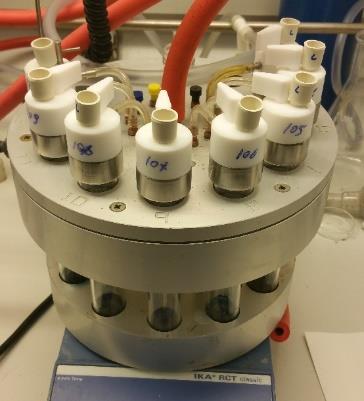Usually, reactions with hydrogen gas are catalyzed by the platinum metal group, and there is therefore a great interest in finding cheaper alternatives. Cobalt is one of the commonly available transition metals, and cobalt compounds also possess interesting properties that are relevant in catalytic reactions.
The thesis describes two projects, both of which deal with hydrogen gas evolution with in situ cobalt catalysts. In the first project, a homogeneous cobalt catalyst has been formed in situ from cobalt(II) bromide, zinc metal, and a special phosphine ligand. The compound thus formed catalyzes the coupling between alcohols and amines to form the corresponding imines by the liberation of hydrogen gas and water. The mechanism has been investigated with a number of labeled substrates and the catalytically active compound is believed to be a cobalt(I) complex with the particular phosphine ligand. This complex reacts with the alcohol and cleaves off two hydrogen atoms in the same step, releasing the aldehyde and subsequently forming the imine. Hydrogen gas is then liberated from the catalyst and the catalytically active compound is restored.
In the second project, dicobalt octacarbonyl has been heated, thereby decomposing into cobalt nanoparticles. These particles catalyze the coupling between two amines by releasing hydrogen gas and ammonia, thereby again forming imines as the product. The coupling can take place both between two different amines and as a self-coupling of a single amine. The nanoparticles have been characterized microscopically and they were found to have a narrow distribution with an average diameter of 2 nm. The heterogeneous cobalt catalyst can be isolated from the amine coupling and reused in a new reaction. In summary, in this project an in situformed cobalt catalyst was developed from the cobalt carbonyl complex and trioctylphosphine oxide, for the acceptorless dehydrogenation of amines into imines.

Multiple reactions submitted to the same temperature were run on Radleys carousel connected to the Schlenk line, in order to perform efficiently the largest number of tests under the same conditions.